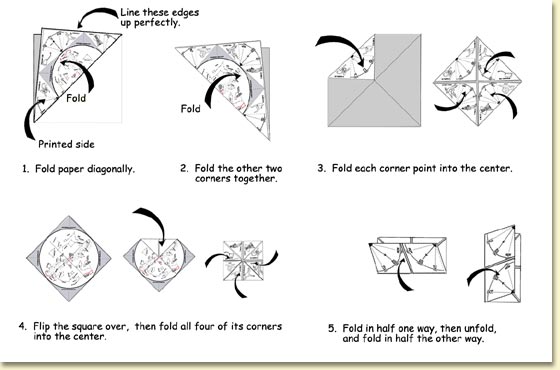 Make a Star Finder (You can download Adobe Reader free.)
Print out the Star Finder pattern for the current month:
|
 Make a Star Finder (You can download Adobe Reader free.)
Print out the Star Finder pattern for the current month:
|
| January February March April May June | July August September October November December |
| Color or decorate
the Star Finder, if you like. Then cut it out on the solid lines.
Fold it like this: |
 |
Play the Star Finder game:
A constellation is group of stars like a dot-to-dot puzzle. If you join
the dots--stars, that is--and use lots of imagination, the picture would
look like an object, animal, or person. For example, Orion is a group of
stars that the Greeks thought looked like a giant hunter with a sword
attached to his belt.
Other than making a pattern in Earth's sky, these stars may not be
related at all. For example, Alnitak, the star at the left side of Orion's
belt, is 817 light years away. (A light year is the distance
light travels in one Earth year, almost 6 trillion miles!) Alnilam, the
star in the middle of the belt, is 1340 light years away. And Mintaka at
the right side of the belt is 916 light years away. Yet they all appear
from Earth to have the same brightness.
We see different
views of the Universe from where we live as Earth makes its yearly trip
around the solar system. That is why we have a different Star Finder for
each month, as different constellations come into view. Also, as Earth
rotates on its axis toward the east throughout the hours of the night, the
whole sky seems to shift toward the west.
The star charts are maps of the sky overhead. So, to get the directions
lined up, hold the map over your head and look up at it, and turn it so
the northern horizon side is facing north.
If you live where big city lights drown out the beauty of the stars,
you may see only a few of the brightest stars and planets. How sad! But
see if you can find at least one or two constellations on a clear,
Moonless night.
|
|
|
|||||